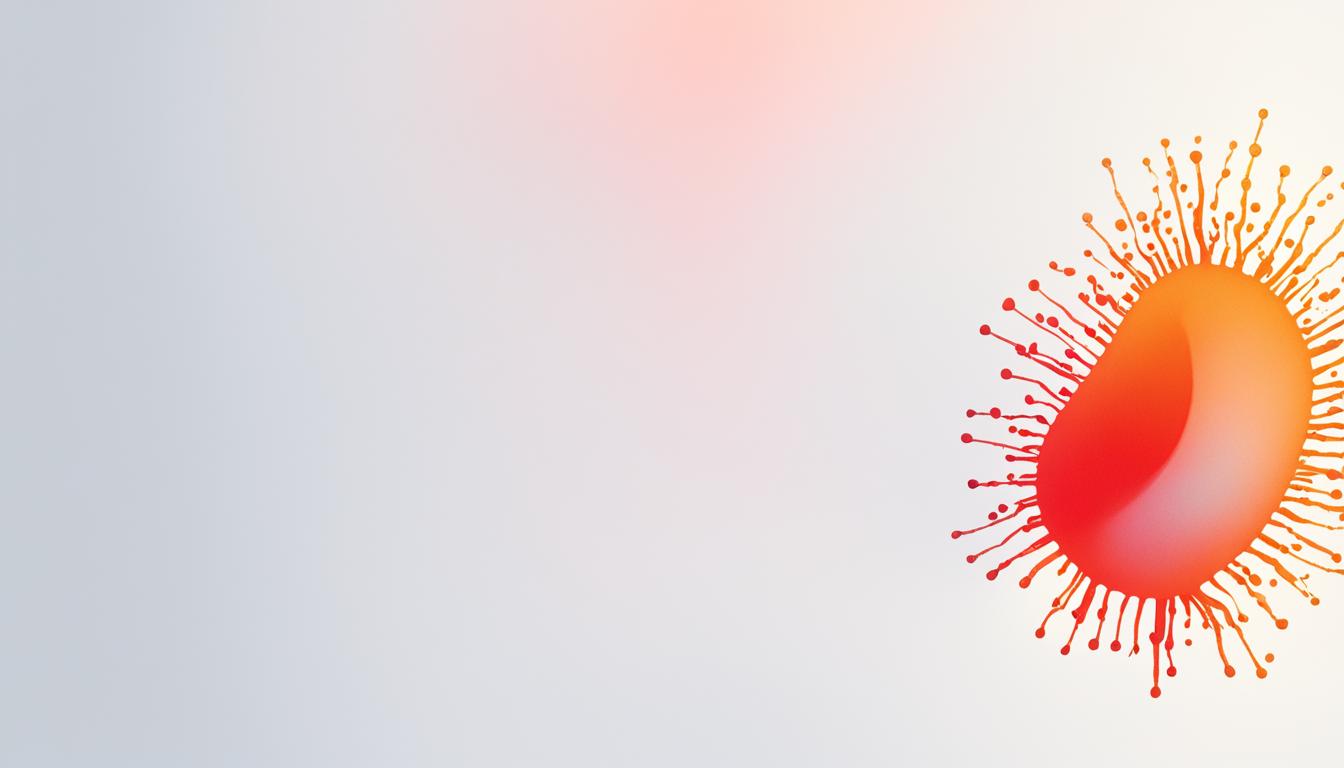Interstitial cystitis/bladder pain syndrome (IC/BPS) is a condition that affects the bladder. It causes the bladder’s lining to become inflamed. This leads to pain, urgent needs to urinate, and frequent urination.
The exact reasons for IC/BPS are not known yet. This makes it hard to diagnose and treat because it can look like other bladder issues. The symptoms can really reduce someone’s quality of life. Treatments work differently for everyone.
One promising treatment is stem cell therapy. It’s showing hope in easing the symptoms of this chronic bladder problem.
Key Takeaways:
- Interstitial cystitis/bladder pain syndrome (IC/BPS) is a complex and chronic medical condition that affects the urinary bladder.
- IC/BPS is characterized by inflammation of the bladder’s lining, leading to recurring discomfort, urgency, and frequency of urination.
- The precise causes of IC/BPS are not fully understood, making it challenging to diagnose and manage.
- The symptoms of IC/BPS can have a significant impact on a patient’s quality of life.
- Stem cell therapy is an emerging treatment option that shows promise in providing relief for IC/BPS patients.
Understanding Interstitial Cystitis/Bladder Pain Syndrome
Interstitial cystitis/bladder pain syndrome (IC/BPS) is a complex pelvic issue. It causes pain or pressure when the bladder is full. Getting a clear diagnosis is hard and doctors might check for other health issues first.
When doctors look inside the bladder of people with IC/BPS, they often see signs of irritation. These signs include inflammation and an increase in certain cells.
The exact cause of IC/BPS is not fully known. Yet, it seems like problems with the bladder wall and an increase in some cells may have a part. Also, there’s a link to too much nitric oxide, a substance found in the body.
IC/BPS Definition and Evaluation
IC/BPS is ongoing pain and discomfort in the pelvic area. It usually happens when the bladder is getting full. Doctors look at medical history and run tests to diagnose it. This includes looking inside the bladder to check for inflammation and special cells.
IC/BPS Etiology and Pathophysiology
Experts don’t know the root cause of IC/BPS yet. They think issues in the bladder lining and certain cells may be key. This could also involve the overactivity of nerves in the area.
Nitric oxide may have a key role in IC/BPS development. It’s normally important in how the bladder works and deals with inflammation. Problems with how the body uses nitric oxide could make IC/BPS worse.
Stem Cell Therapy for Interstitial Cystitis/Bladder Pain Syndrome
Regenerative medicine, which includes stem cell therapy, has made big strides lately. Scientists are looking at mesenchymal stem cells (MSCs) and growth factors for treating IC/BPS. They have run tests in areas like orthopedics, dermatology, and ophthalmology using MSCs and platelet-rich plasma (PRP).
This new treatment aims to fix damaged connective tissues in those with IC/BPS. It uses the abilities of MSCs and growth factors to bring lasting relief. But, we need more studies to understand fully how well and why these treatments work.
It’s critical to look closely at the science behind stem cell and growth factor treatments for IC/BPS. Studying their effects on a molecular level helps doctors make treatments better. As we learn more, regenerative medicine becomes even more promising for IC/BPS patients.
FAQ
Q: What are the symptoms of interstitial cystitis/bladder pain syndrome (IC/BPS)?
A: IC/BPS causes frequent urges to urinate, along with pain and pressure in the bladder. This discomfort appears often and might lead to a need to urinate right away.
Q: How is interstitial cystitis/bladder pain syndrome (IC/BPS) diagnosed?
A: Diagnosing IC/BPS is hard and usually involves ruling out other conditions first. Doctors may look for signs like bladder wall inflammation and too many mast cells.
Q: What is the etiology of interstitial cystitis/bladder pain syndrome (IC/BPS)?
A: The main cause of IC/BPS is not completely clear. Scientists think issues like inflammation, problems in the bladder’s lining, and nerve changes are key. Studies also point to the role of nitric oxide and the presence of more mast cells in the bladder wall.
Q: What is stem cell therapy, and how can it treat interstitial cystitis/bladder pain syndrome (IC/BPS)?
A: Stem cell treatment offers hope for easing the symptoms of IC/BPS. It uses cells and growth factors to try and repair damaged tissues in the bladder. Although promising, more studies on this approach are necessary to confirm its benefits and how it works.
Q: What other treatment options are available for interstitial cystitis/bladder pain syndrome (IC/BPS)?
A: There are several ways to manage IC/BPS. These include certain medicines, treatments that go straight into the bladder, and techniques to change how nerves work. Patients should also look at lifestyle changes, like diet and exercise, to help reduce symptoms.

